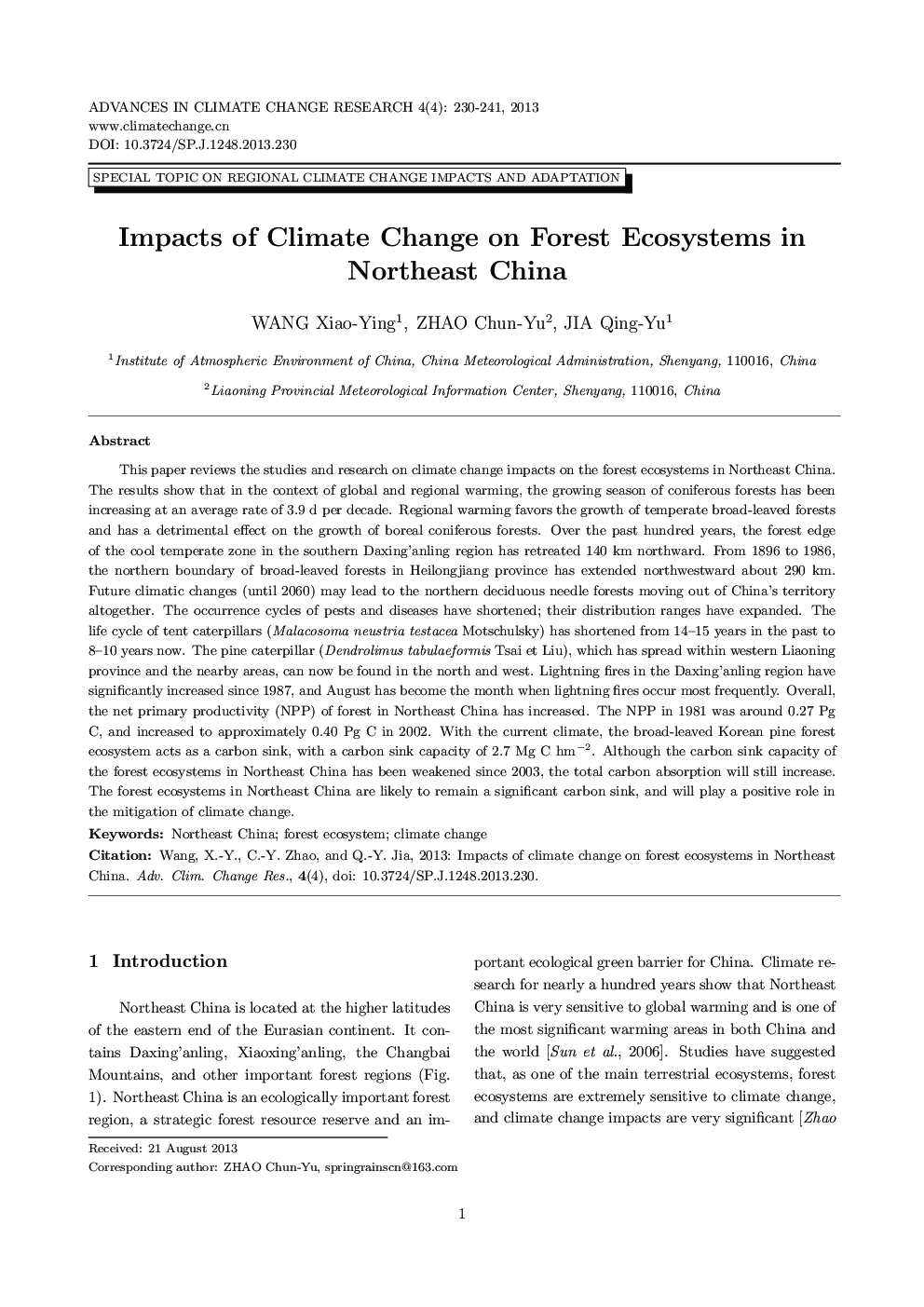| کد مقاله | کد نشریه | سال انتشار | مقاله انگلیسی | نسخه تمام متن |
|---|---|---|---|---|
| 4673630 | 1346937 | 2013 | 12 صفحه PDF | دانلود رایگان |
This paper reviews the studies and research on climate change impacts on the forest ecosystems in Northeast China. The results show that in the context of global and regional warming, the growing season of coniferous forests has been increasing at an average rate of 3.9 d per decade. Regional warming favors the growth of temperate broad-leaved forests and has a detrimental effect on the growth of boreal coniferous forests. Over the past hundred years, the forest edge of the cool temperate zone in the southern Daxing’anling region has retreated 140 km northward. From 1896 to 1986, the northern boundary of broad-leaved forests in Heilongjiang province has extended northwestward about 290 km. Future climatic changes (until 2060) may lead to the northern deciduous needle forests moving out of China’s territory altogether. The occurrence cycles of pests and diseases have shortened; their distribution ranges have expanded. The life cycle of tent caterpillars (Malacosoma neustria testacea Motschulsky) has shortened from 14–15 years in the past to 8–10 years now. The pine caterpillar (Dendrolimus tabulaeformis Tsai et Liu), which has spread within western Liaoning province and the nearby areas, can now be found in the north and west. Lightning fires in the Daxing’anling region have significantly increased since 1987, and August has become the month when lightning fires occur most frequently. Overall, the net primary productivity (NPP) of forest in Northeast China has increased. The NPP in 1981 was around 0.27 Pg C, and increased to approximately 0.40 Pg C in 2002. With the current climate, the broad-leaved Korean pine forest ecosystem acts as a carbon sink, with a carbon sink capacity of 2.7 Mg C hm–2. Although the carbon sink capacity of the forest ecosystems in Northeast China has been weakened since 2003, the total carbon absorption will still increase. The forest ecosystems in Northeast China are likely to remain a significant carbon sink, and will play a positive role in the mitigation of climate change.CitationWang, X.-Y., C.-Y. Zhao, and Q.-Y. Jia, 2013: Impacts of climate change on forest ecosystems in Northeast China. Adv. Clim. Change Res., 4(4), doi: 10.3724/SP.J.1248.2013.230.
Journal: Advances in Climate Change Research - Volume 4, Issue 4, 25 December 2013, Pages 230–241
